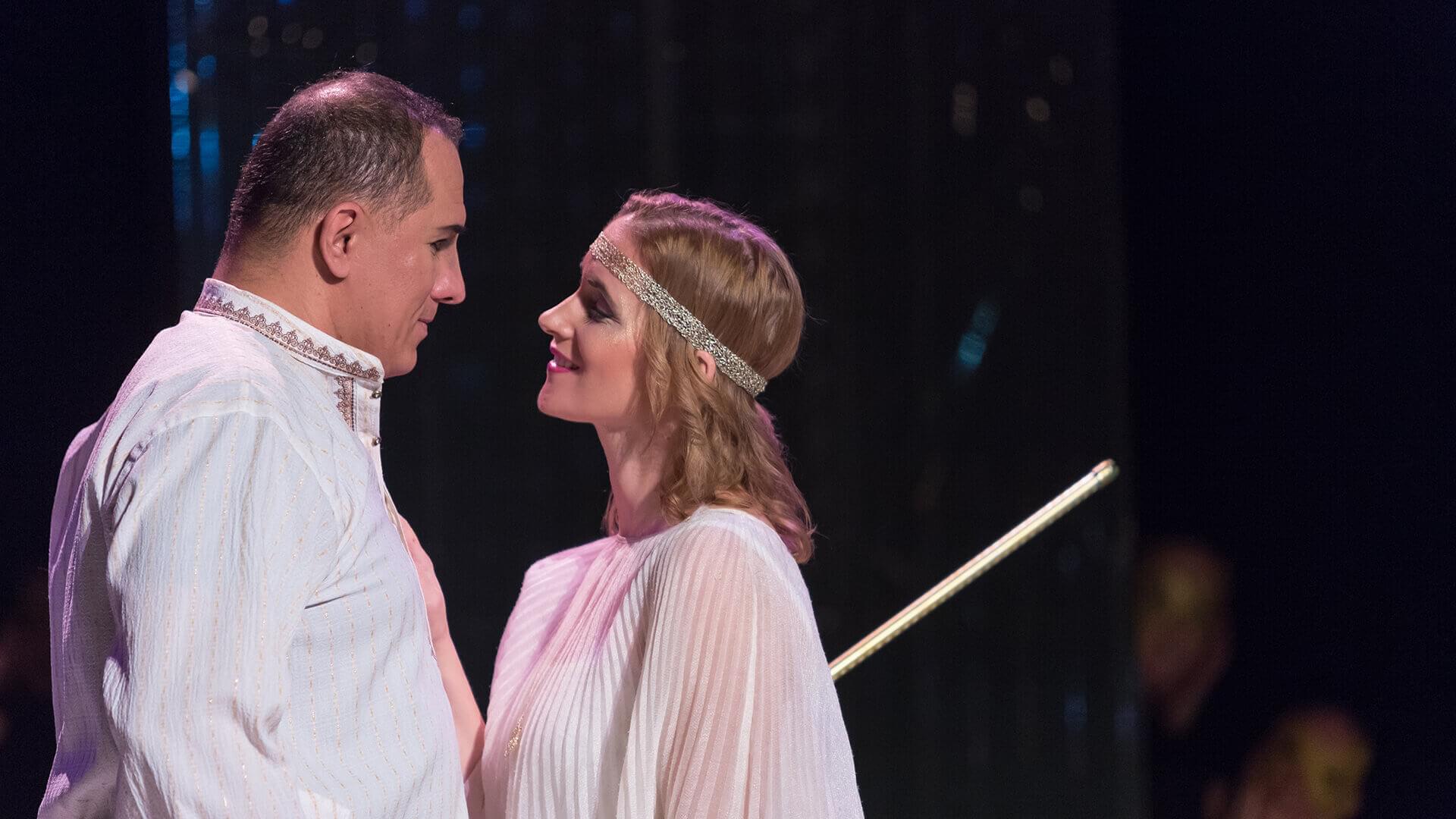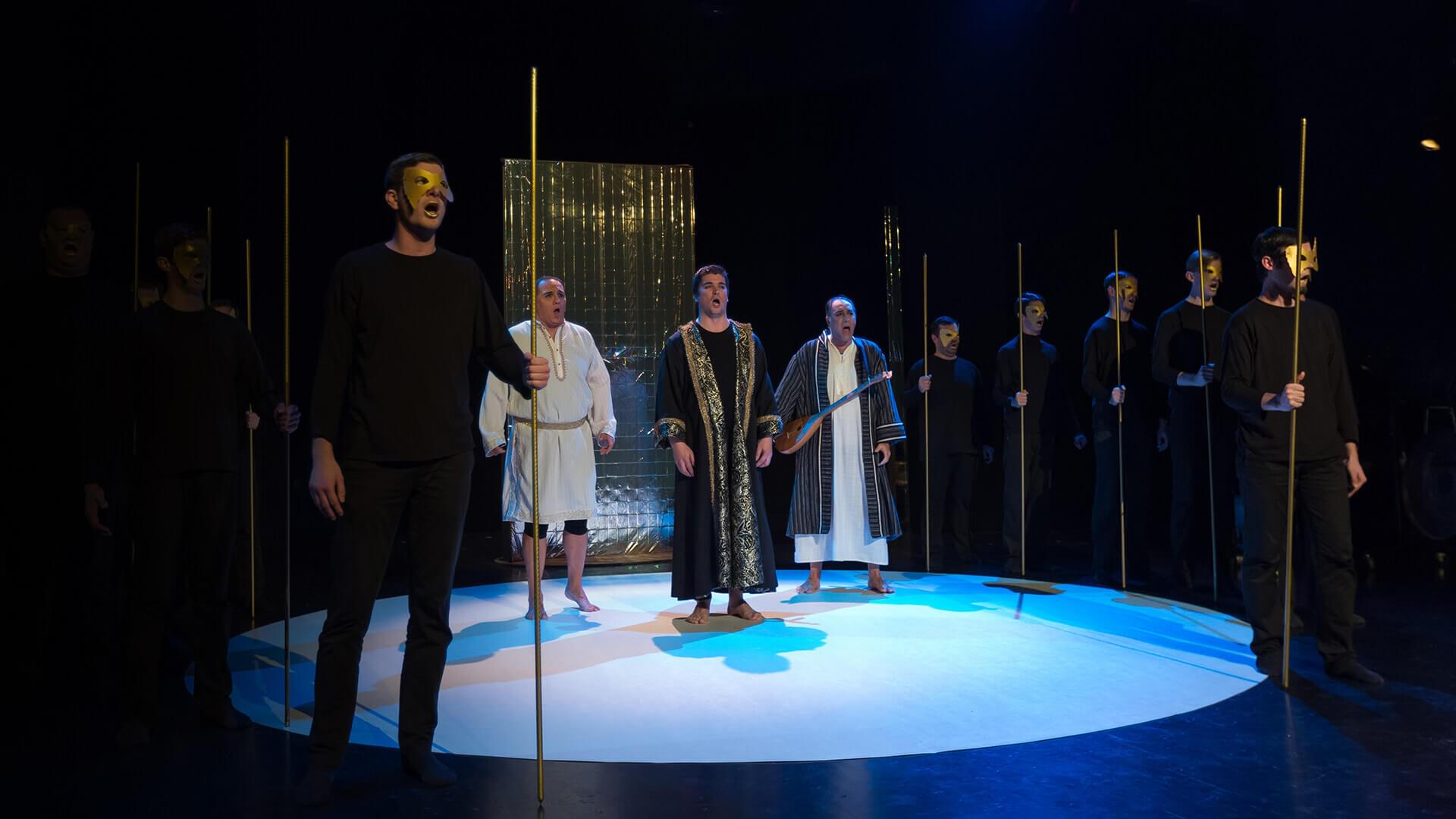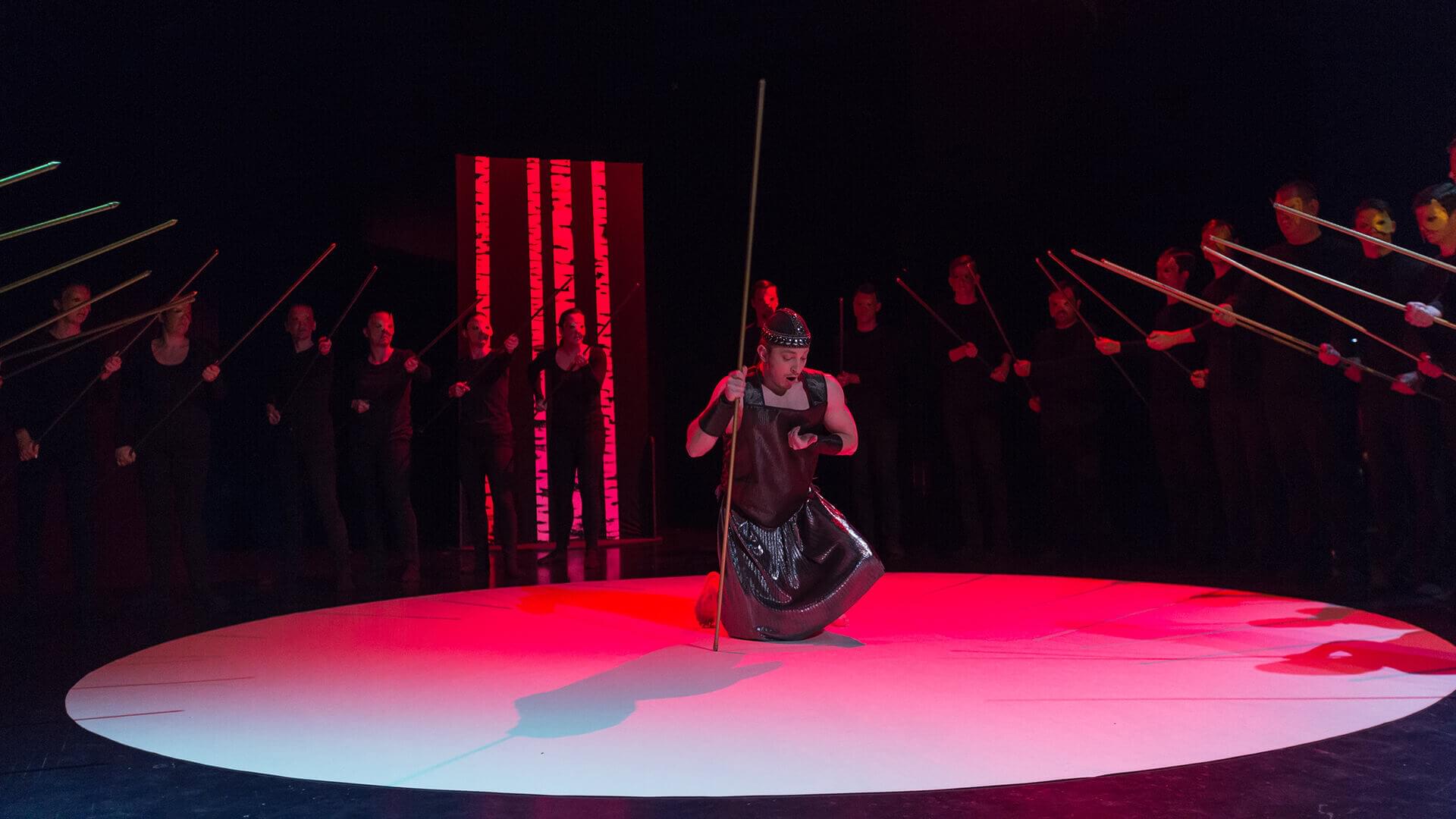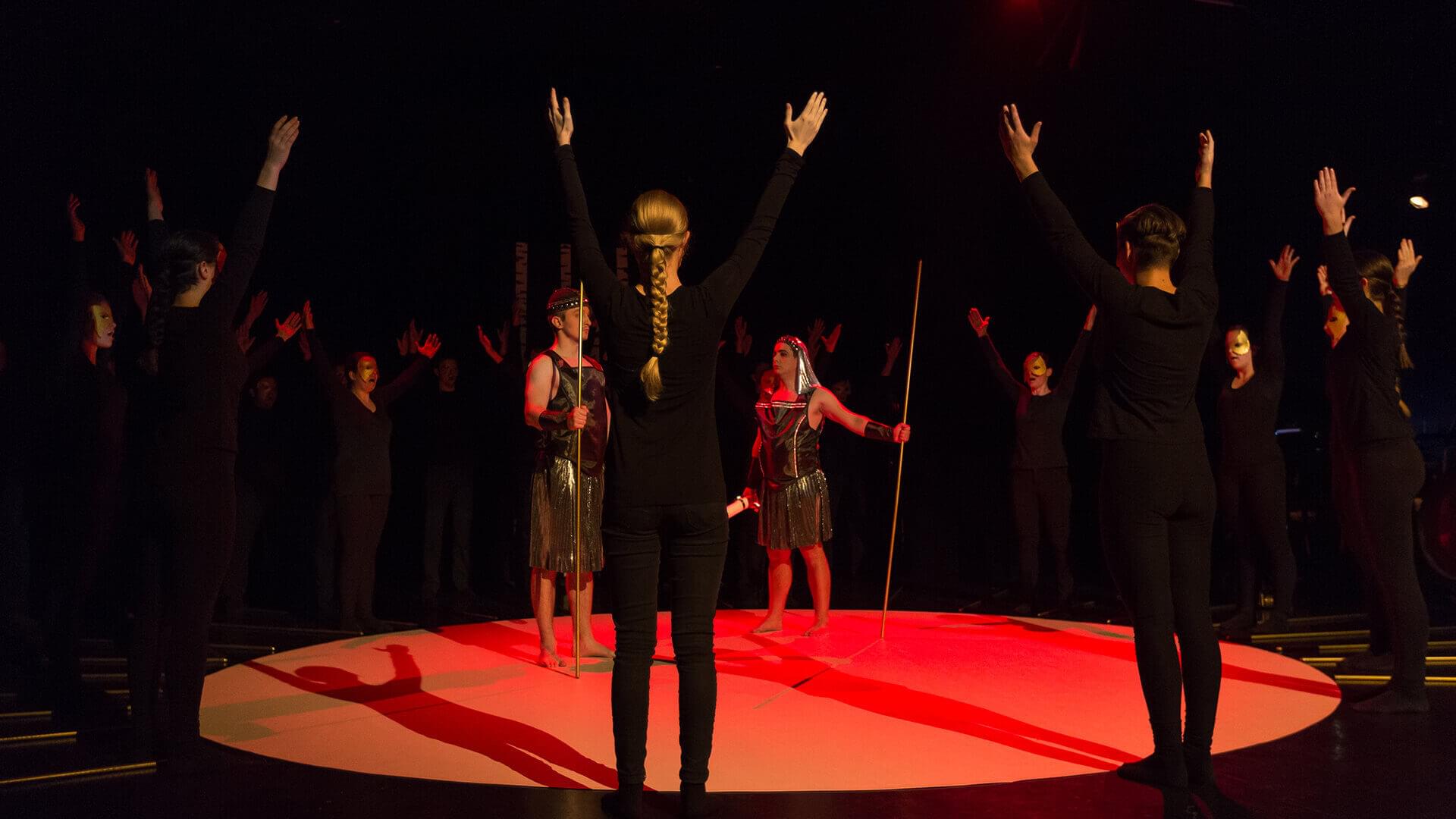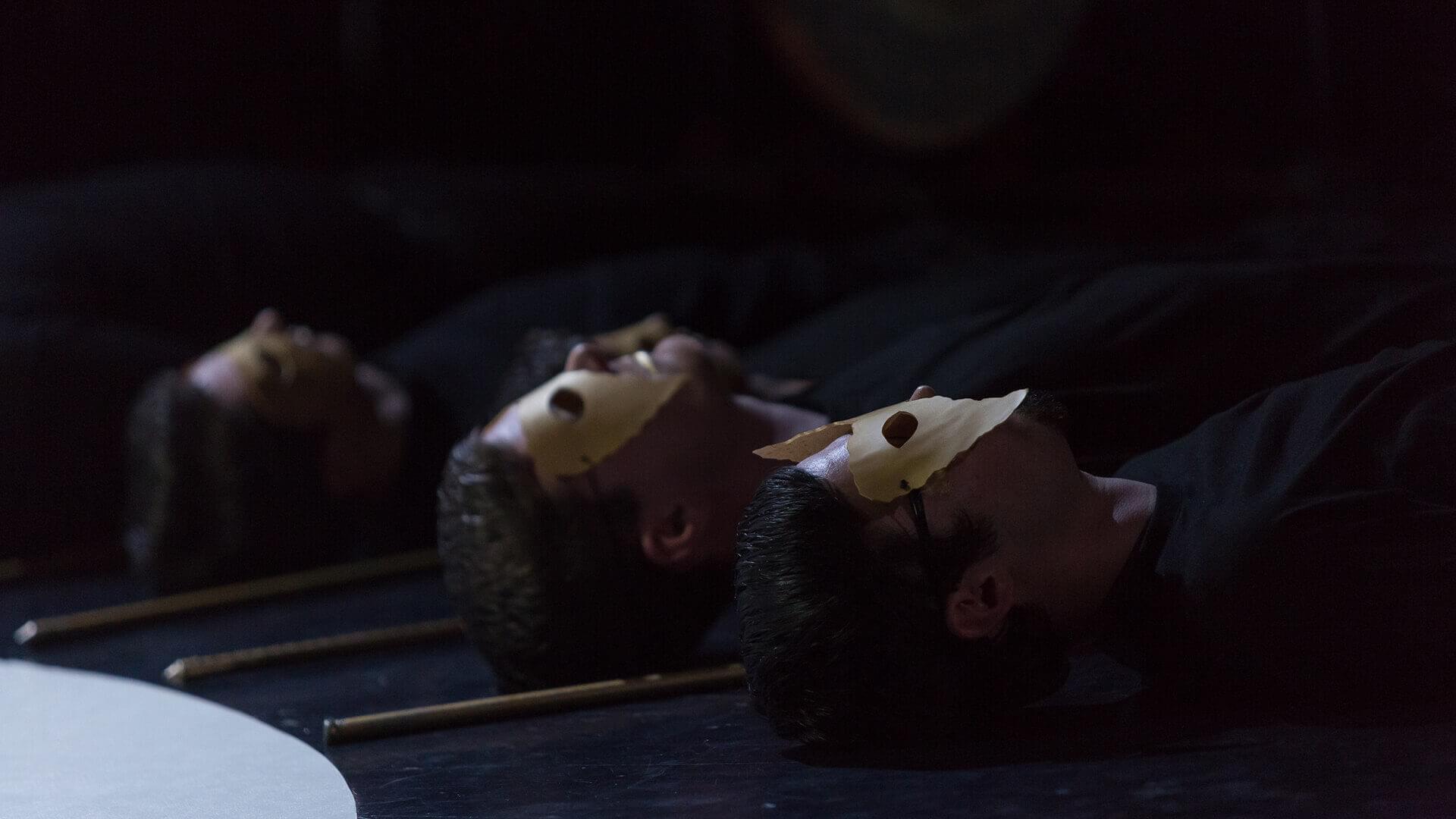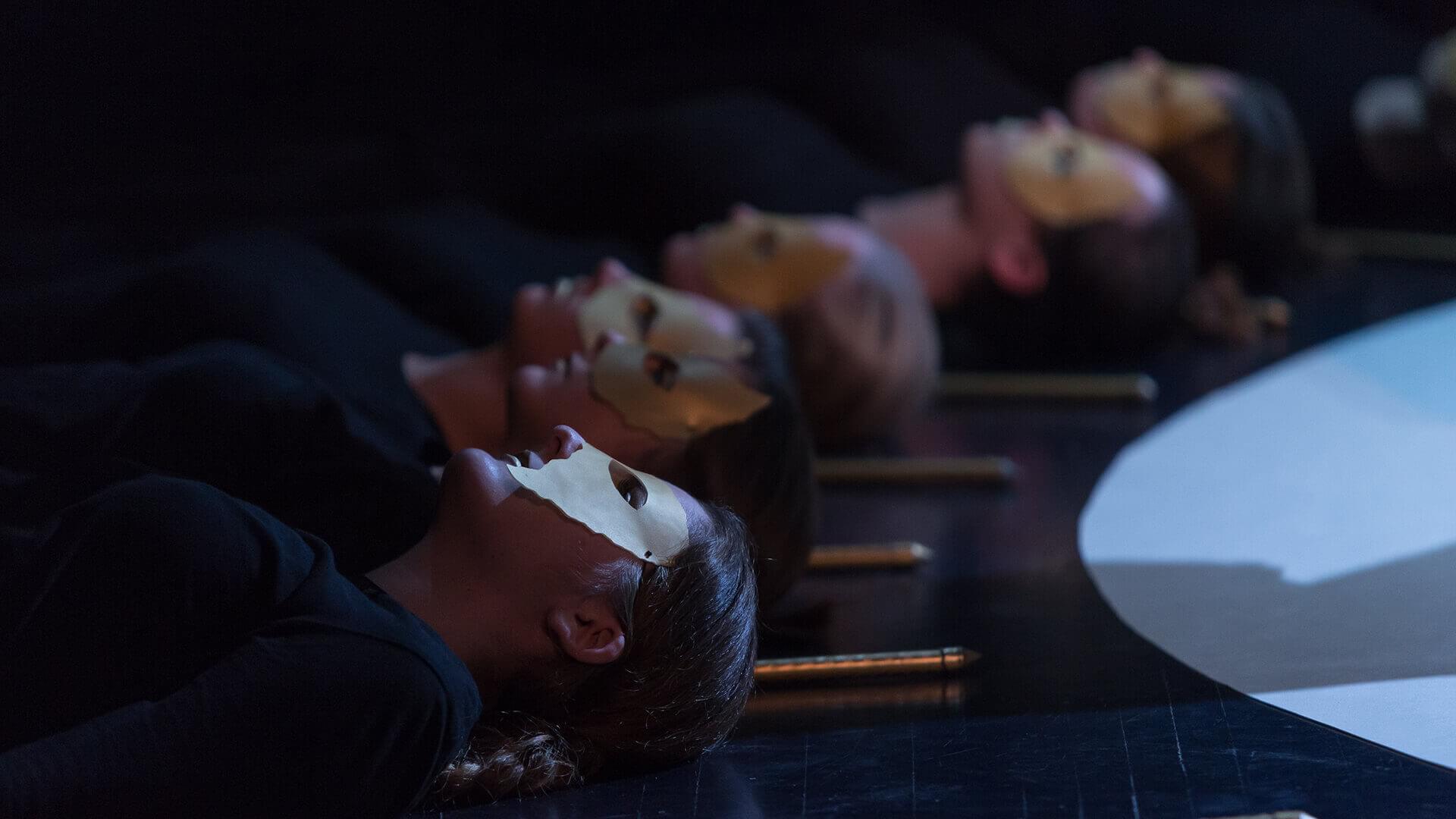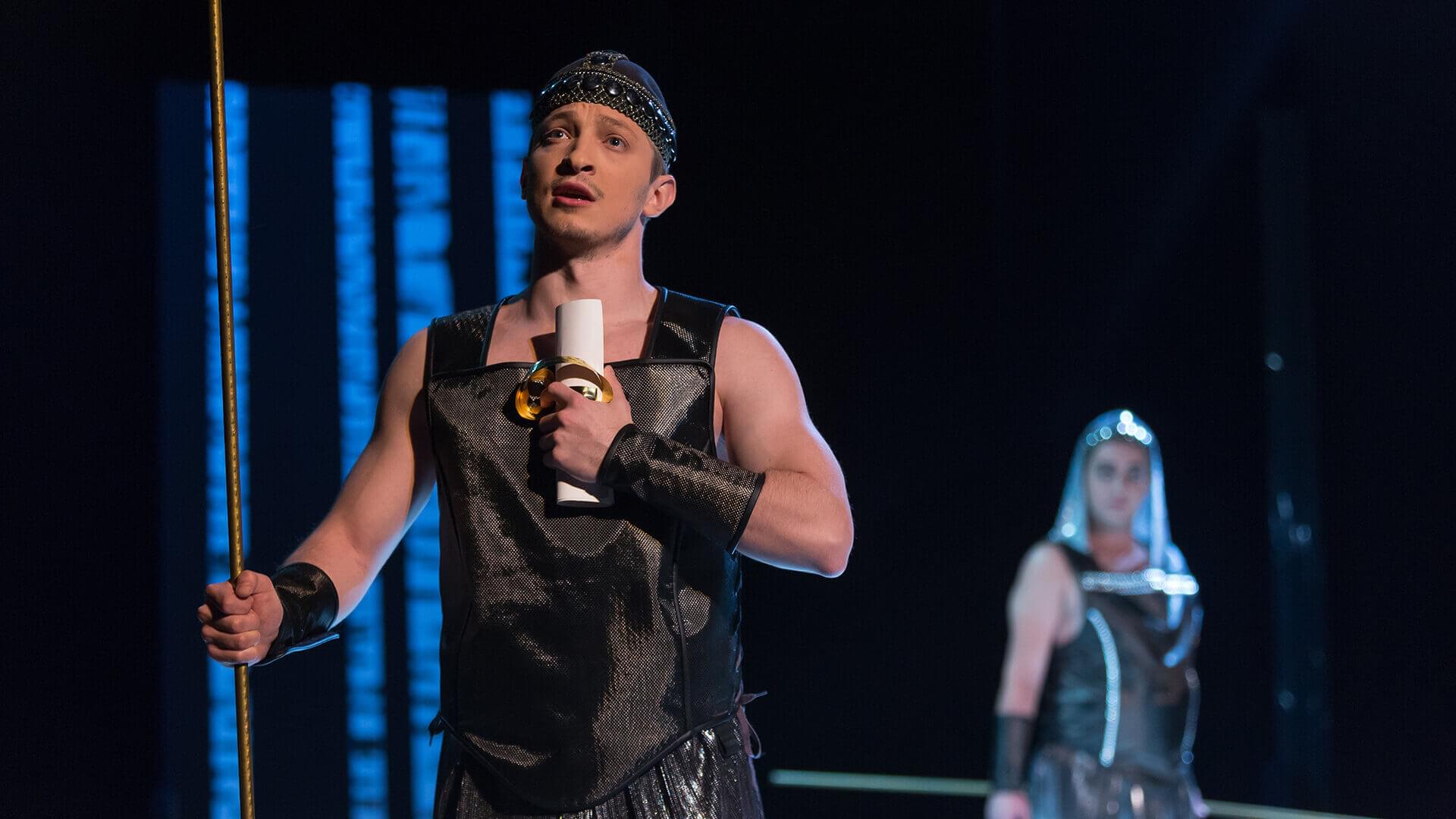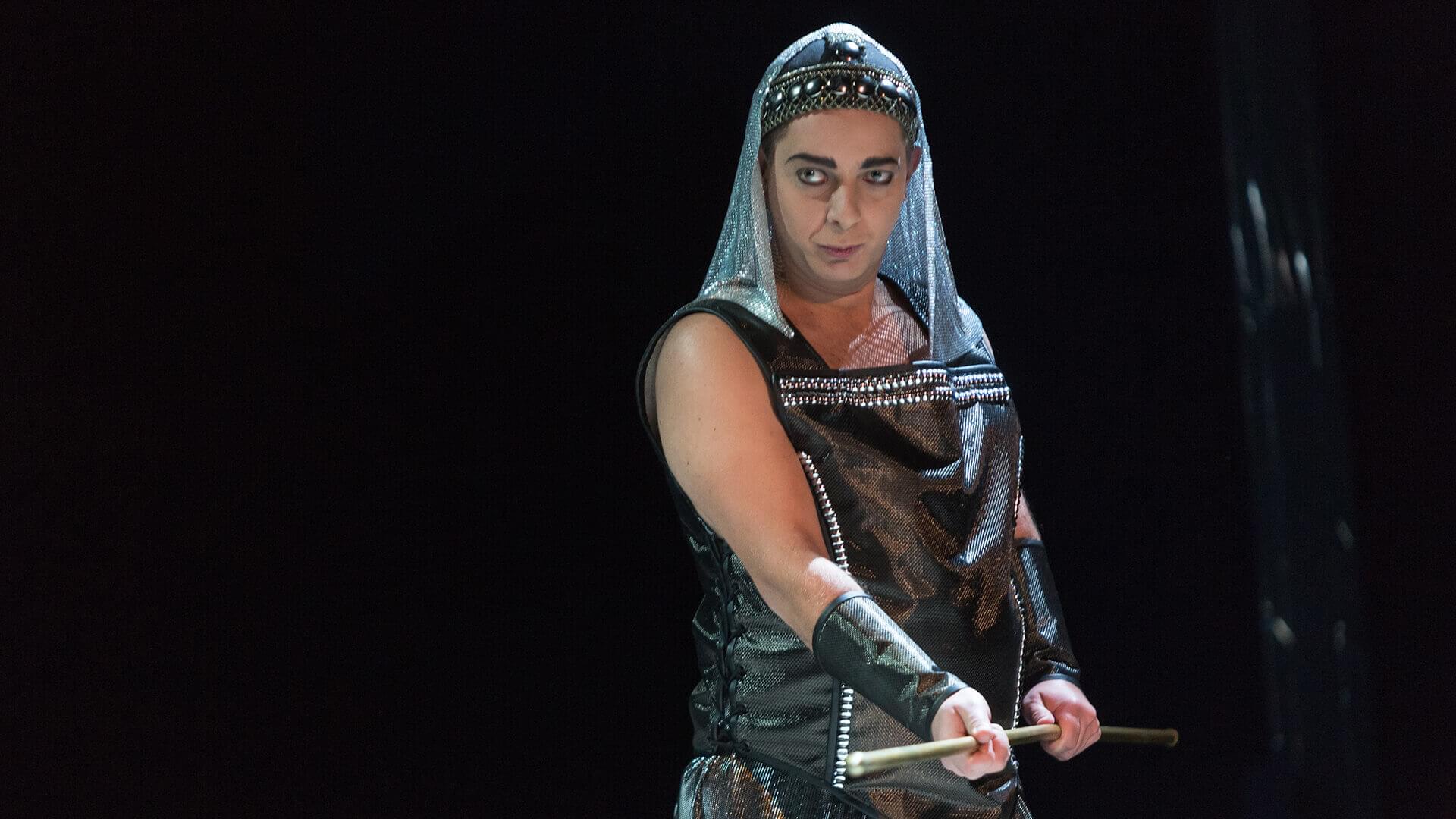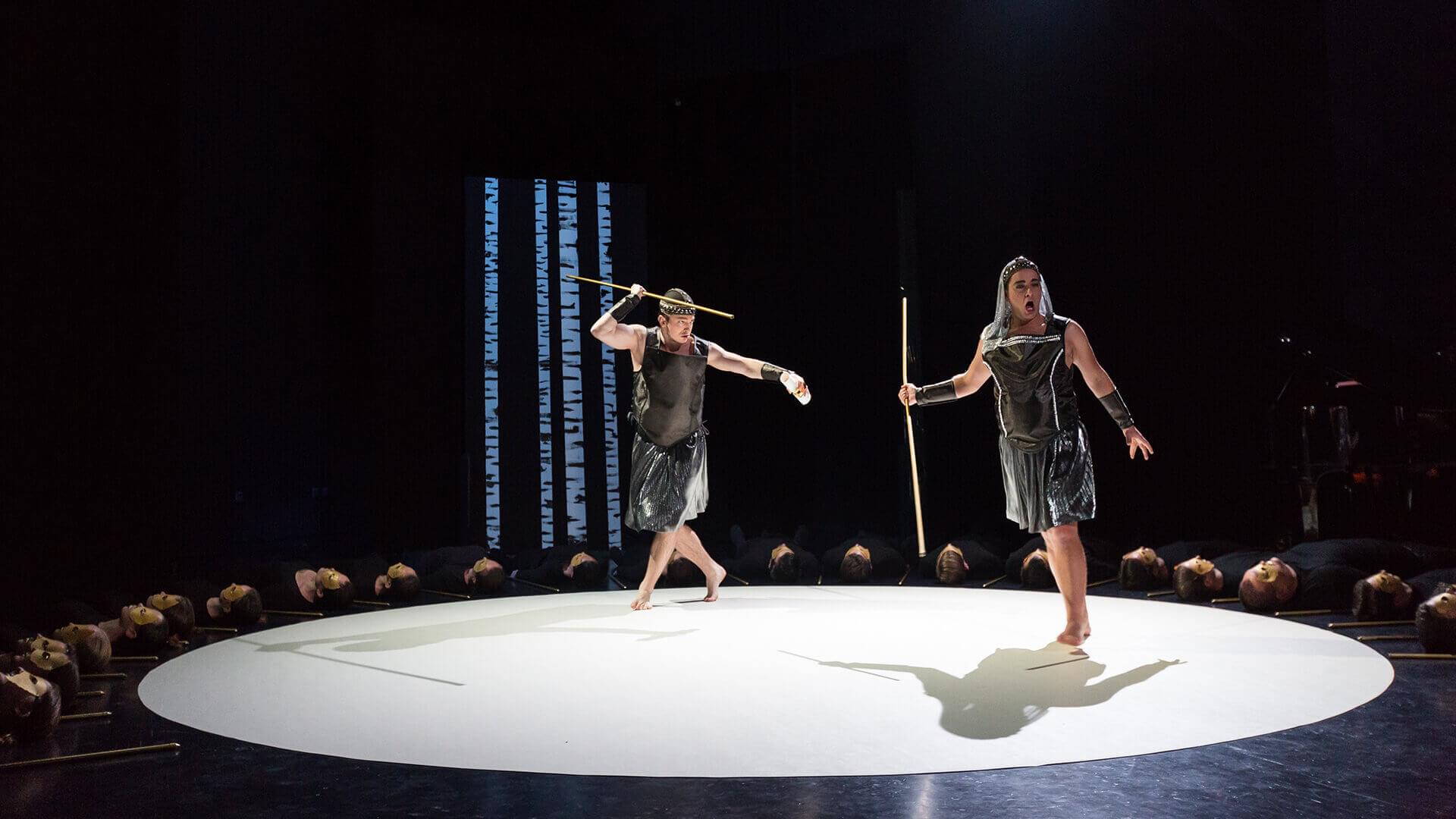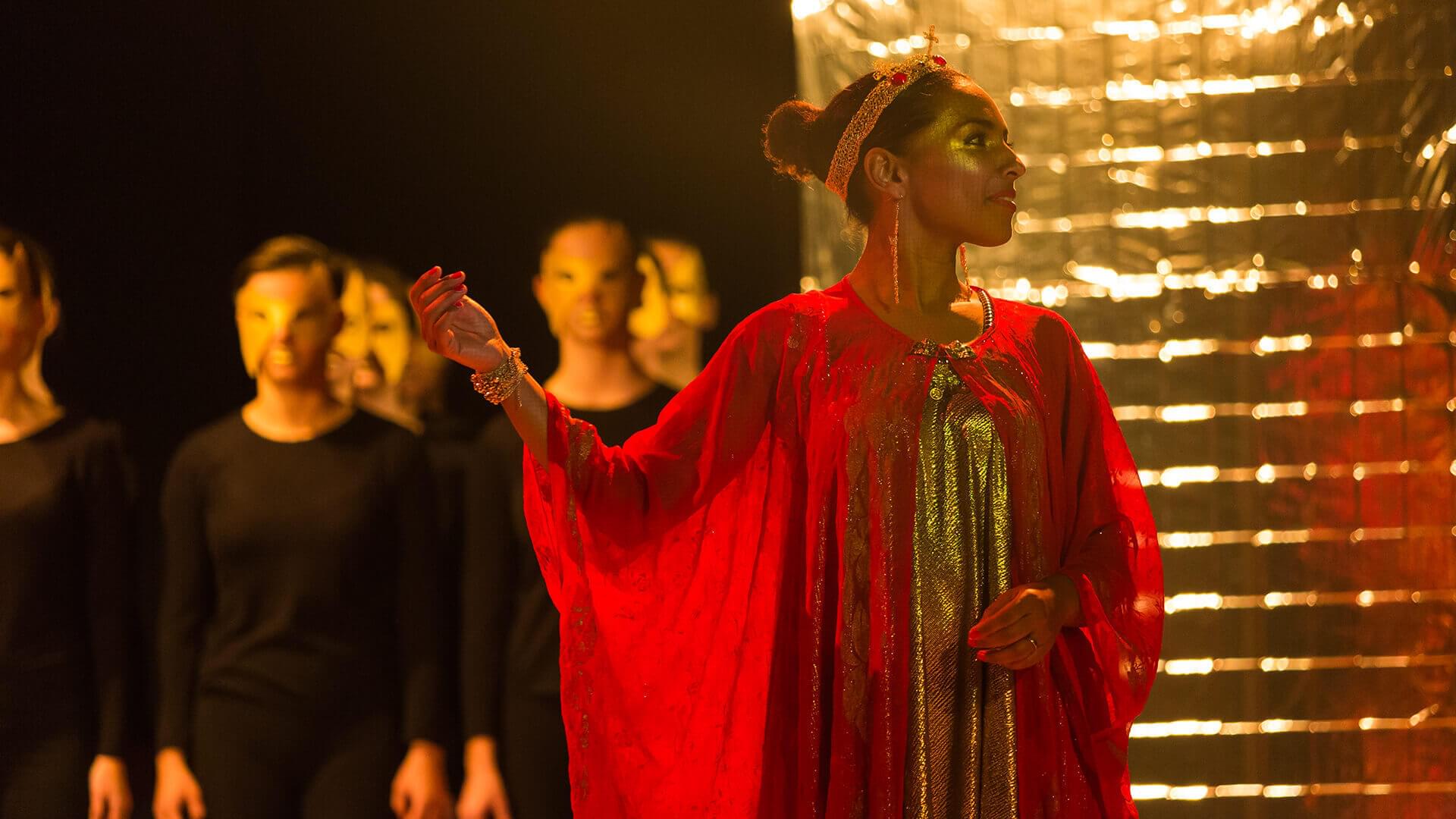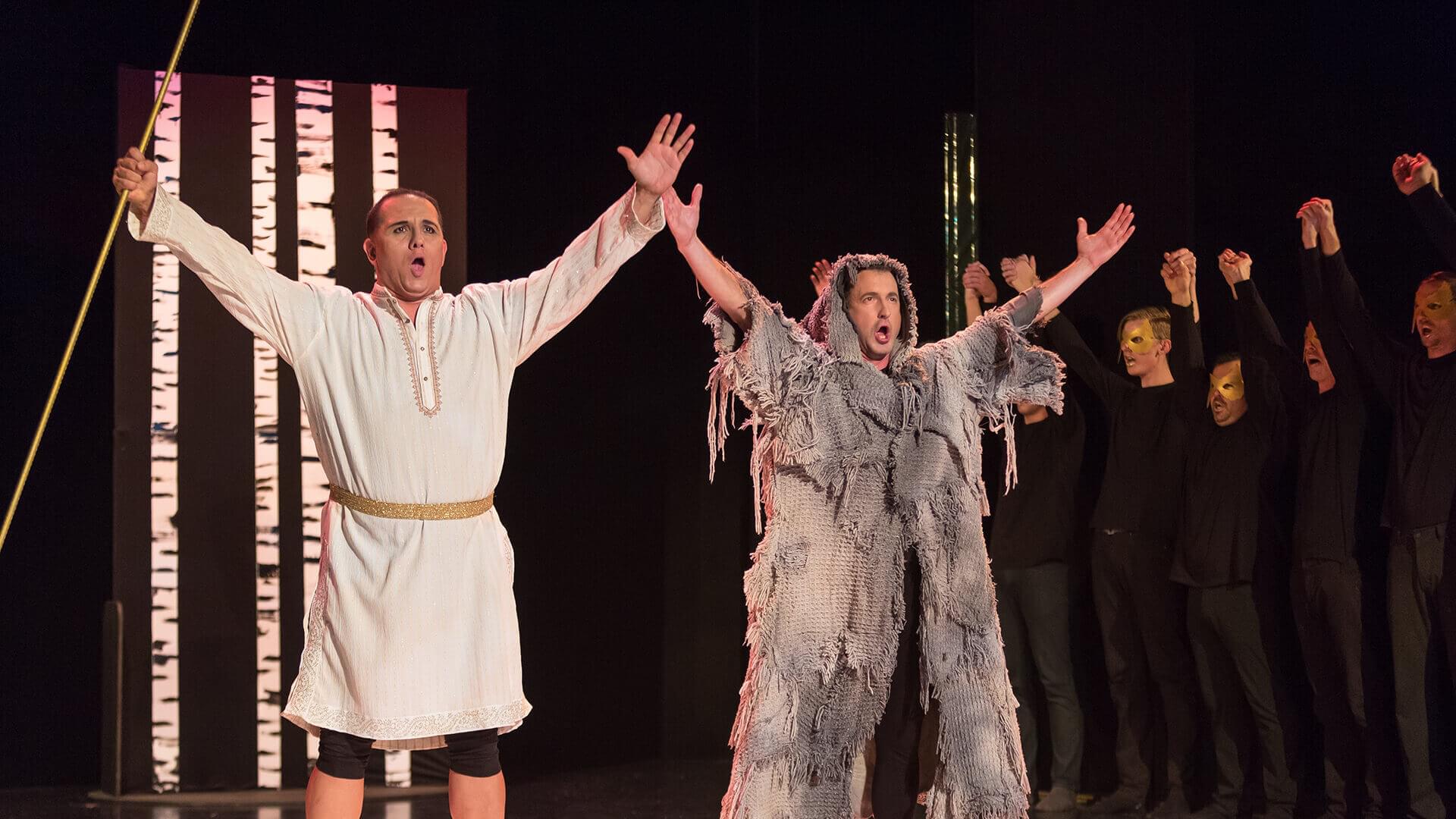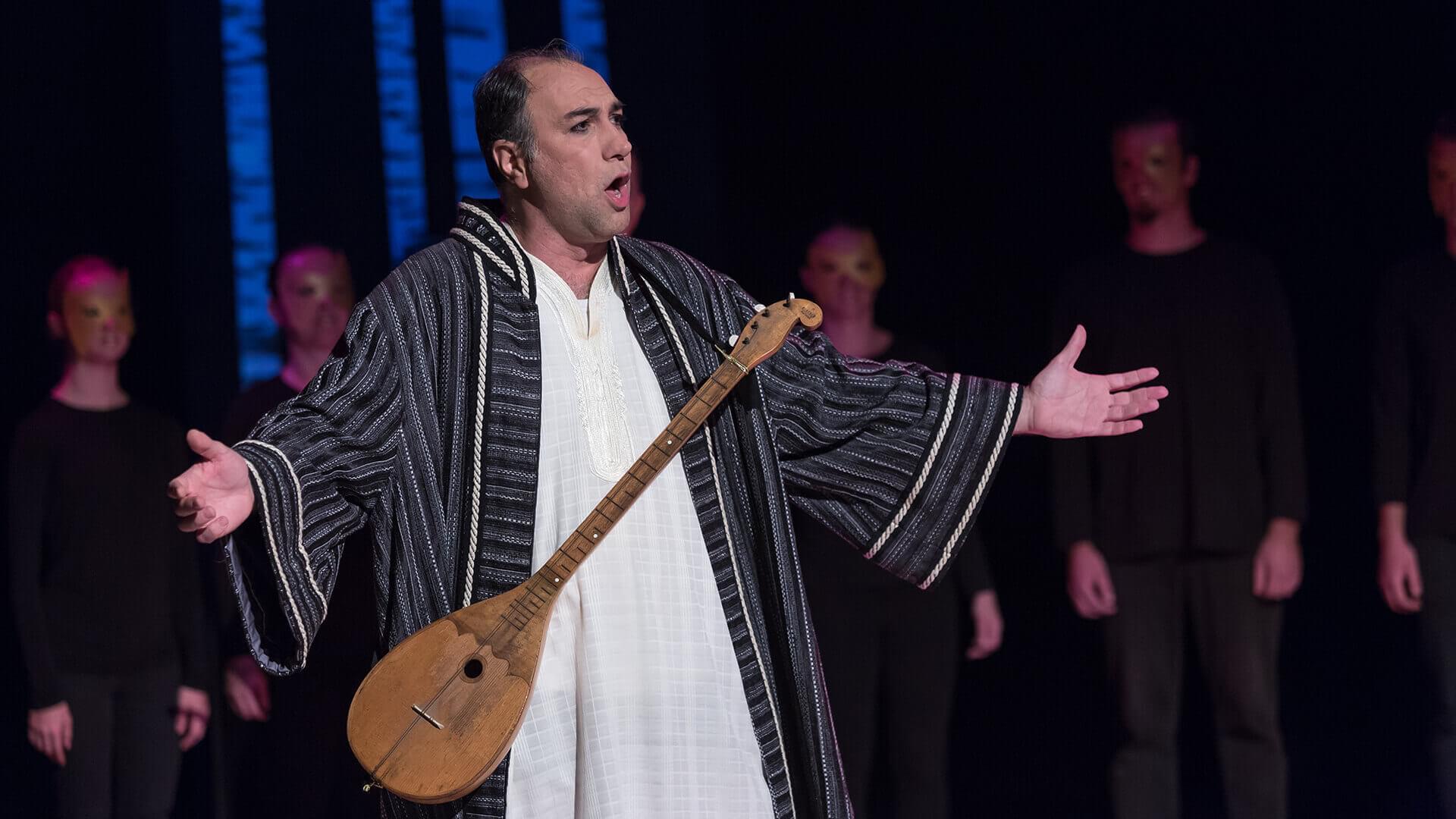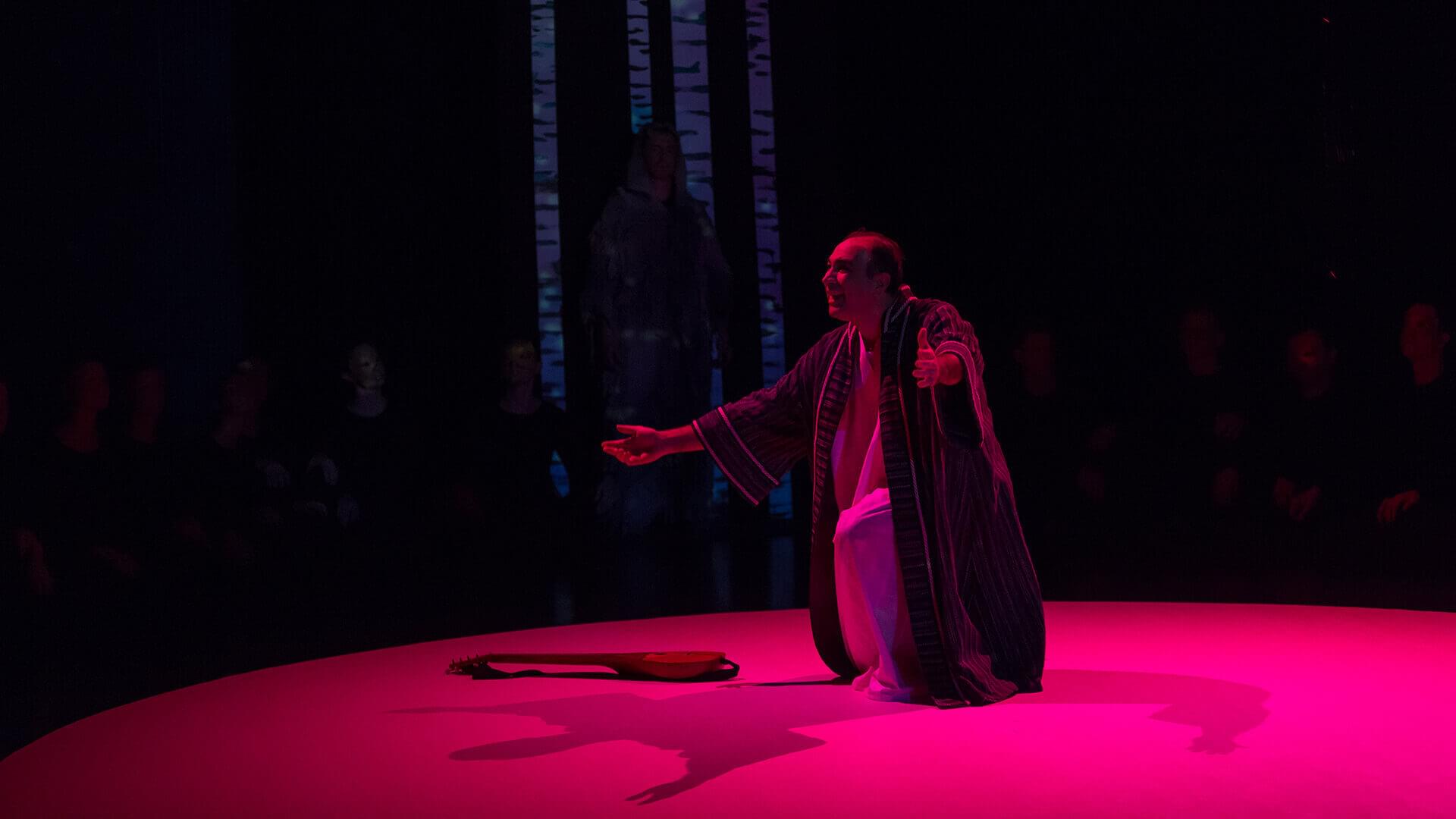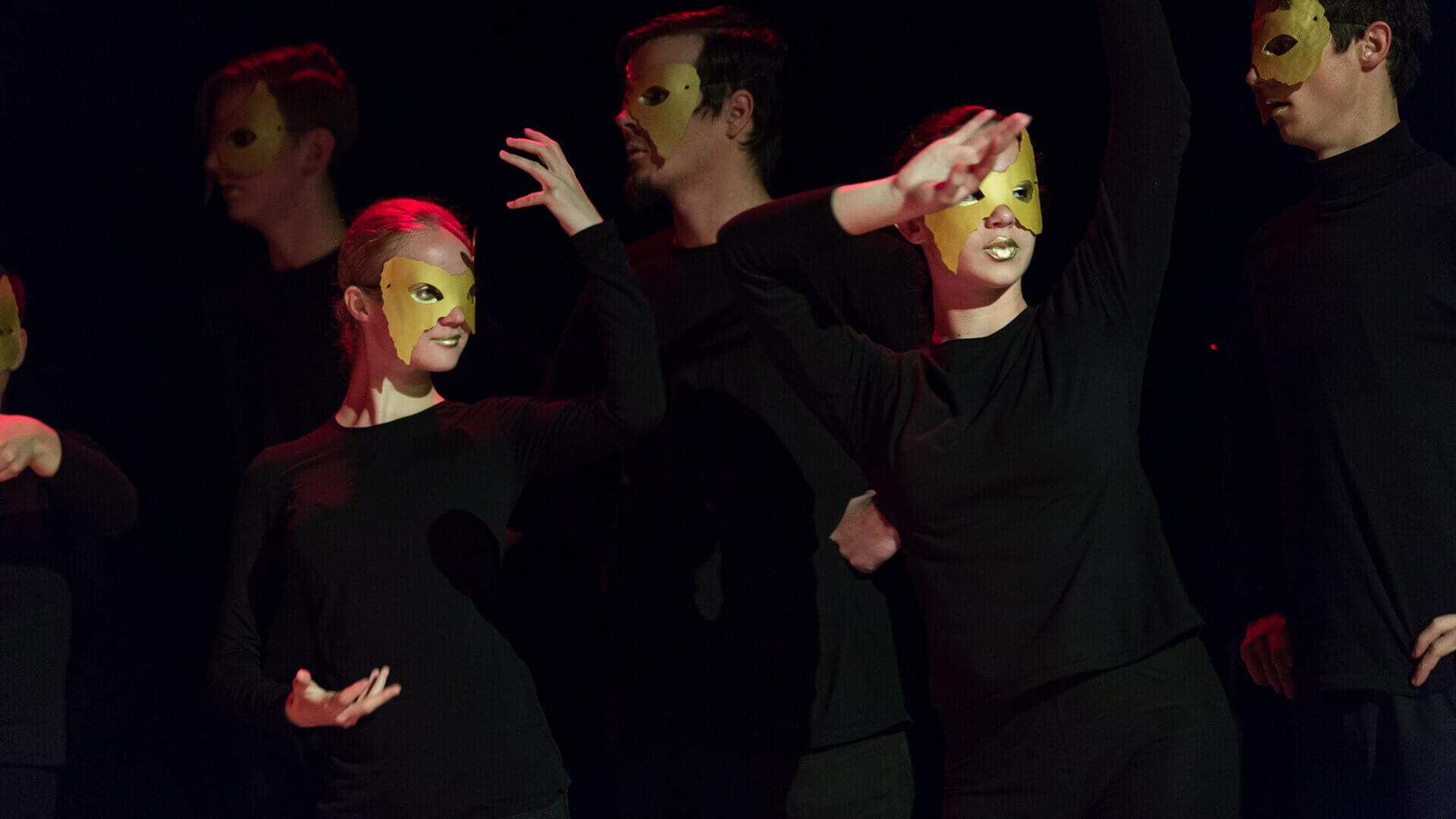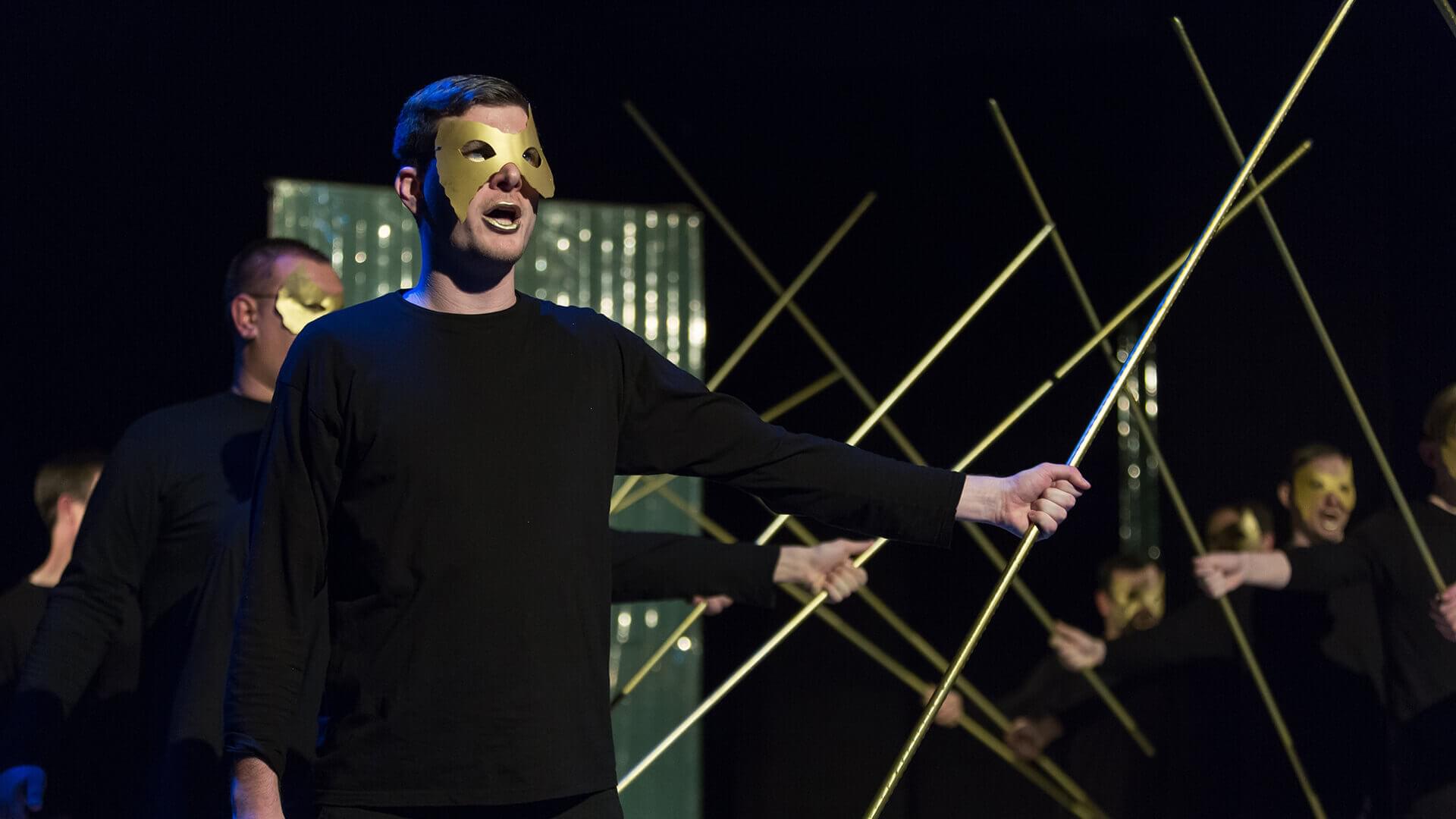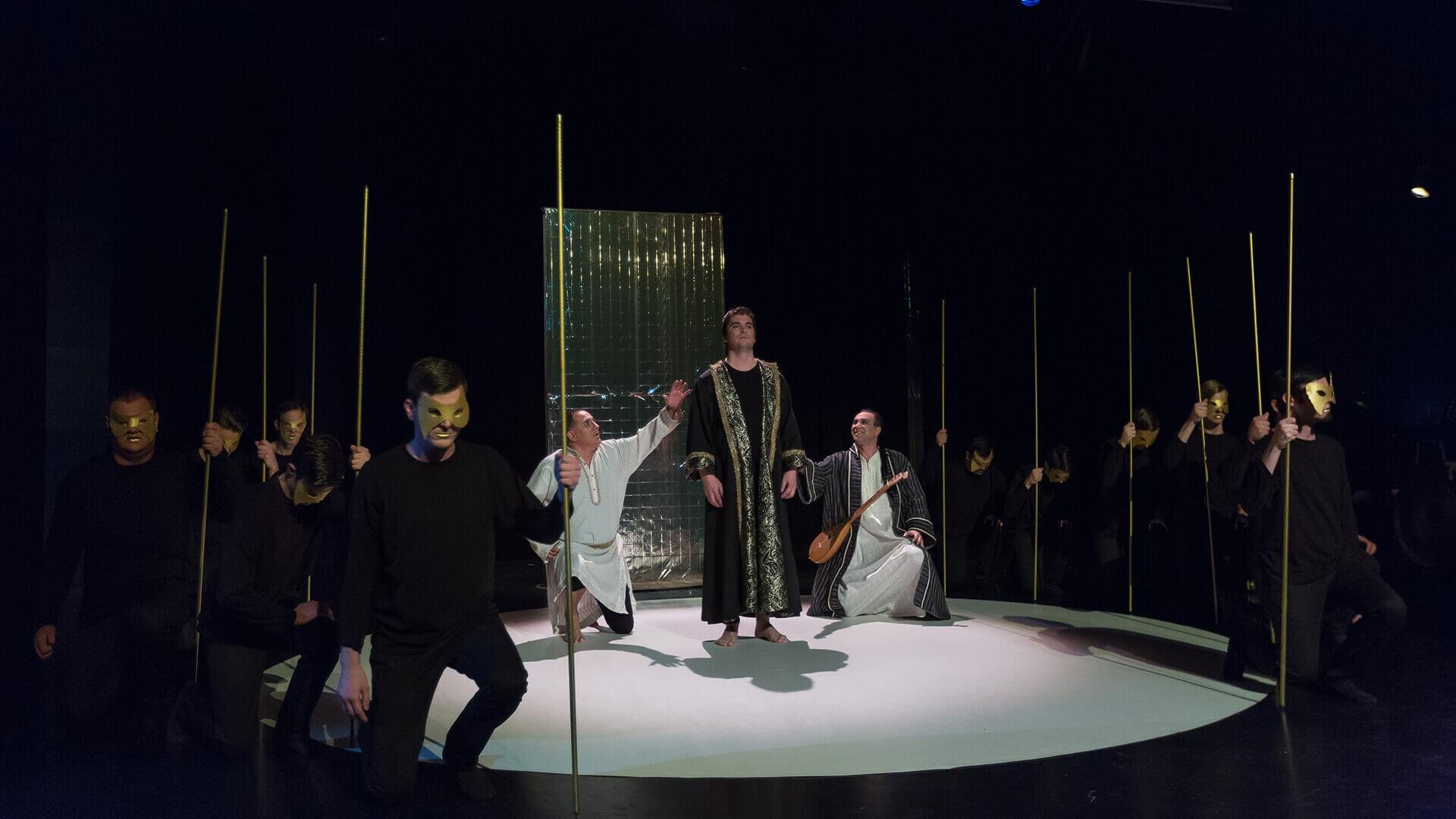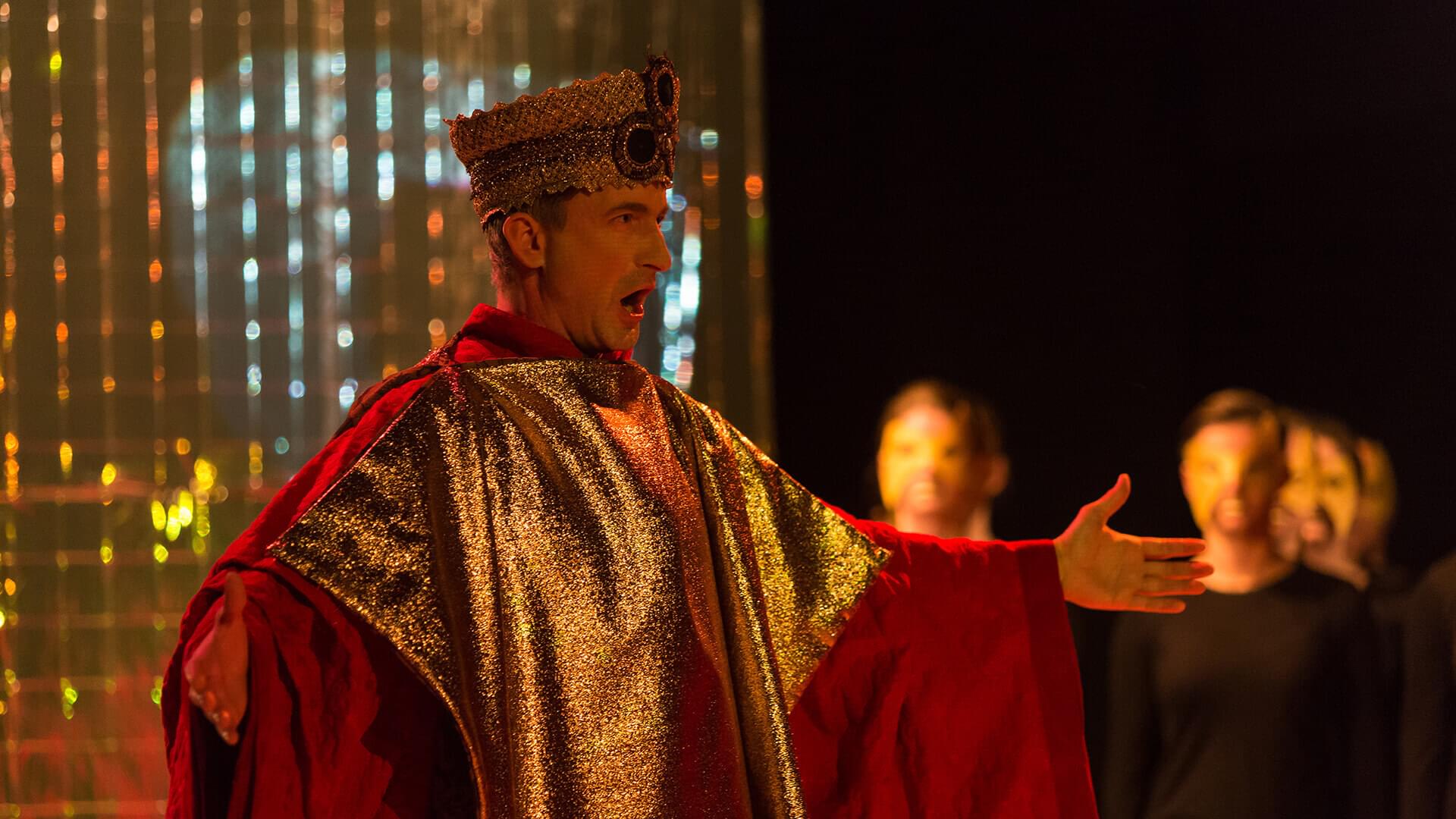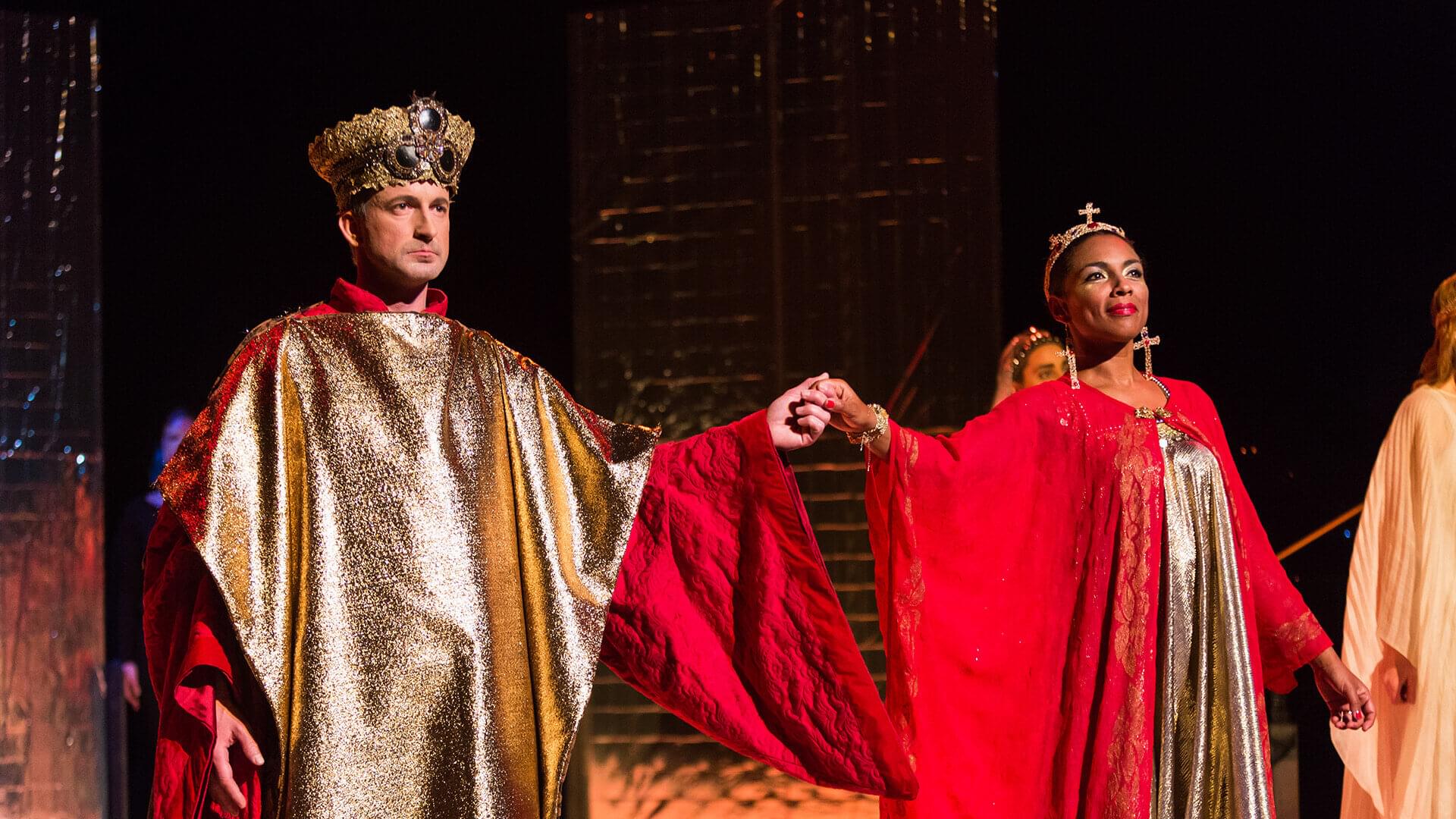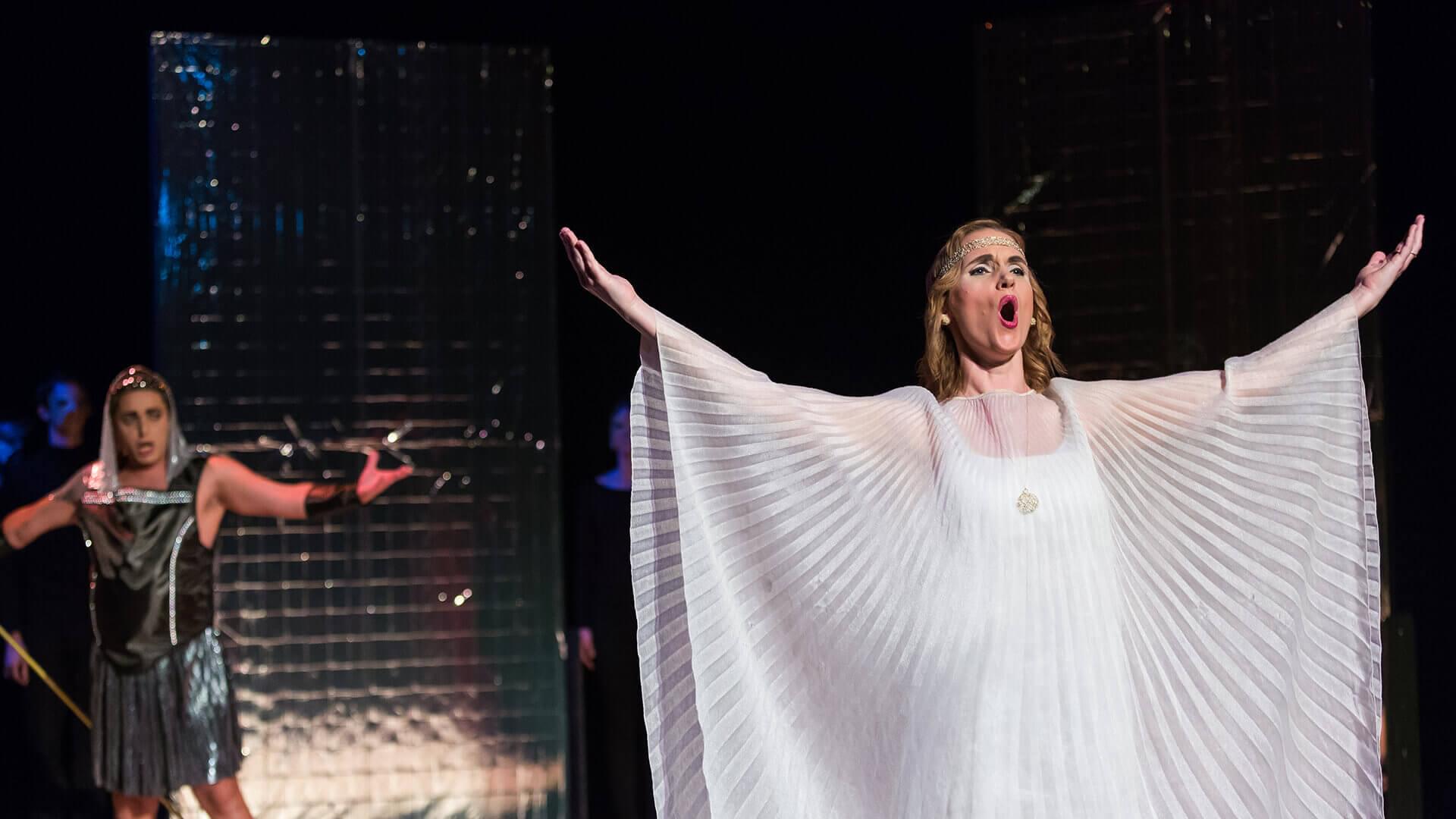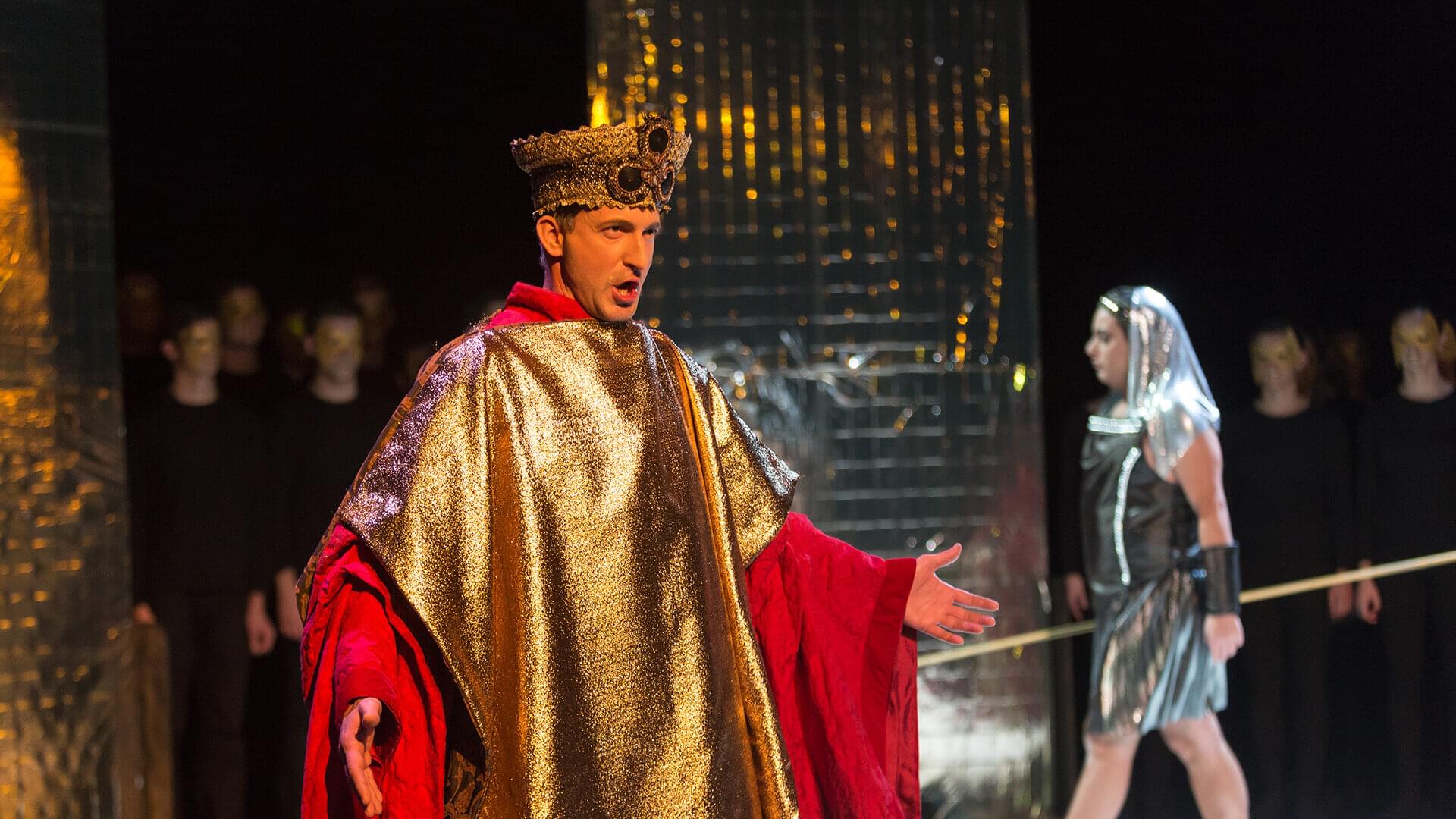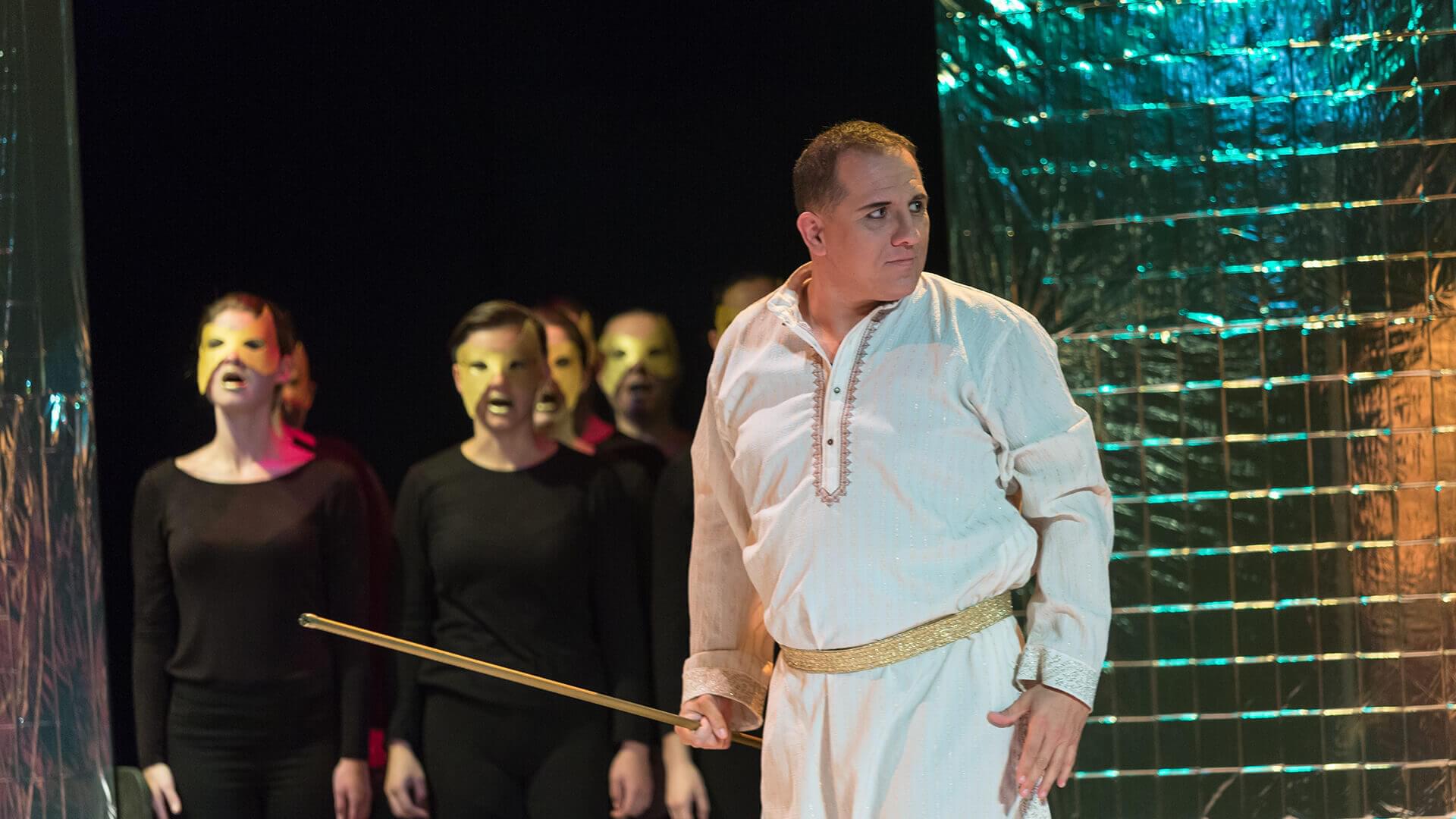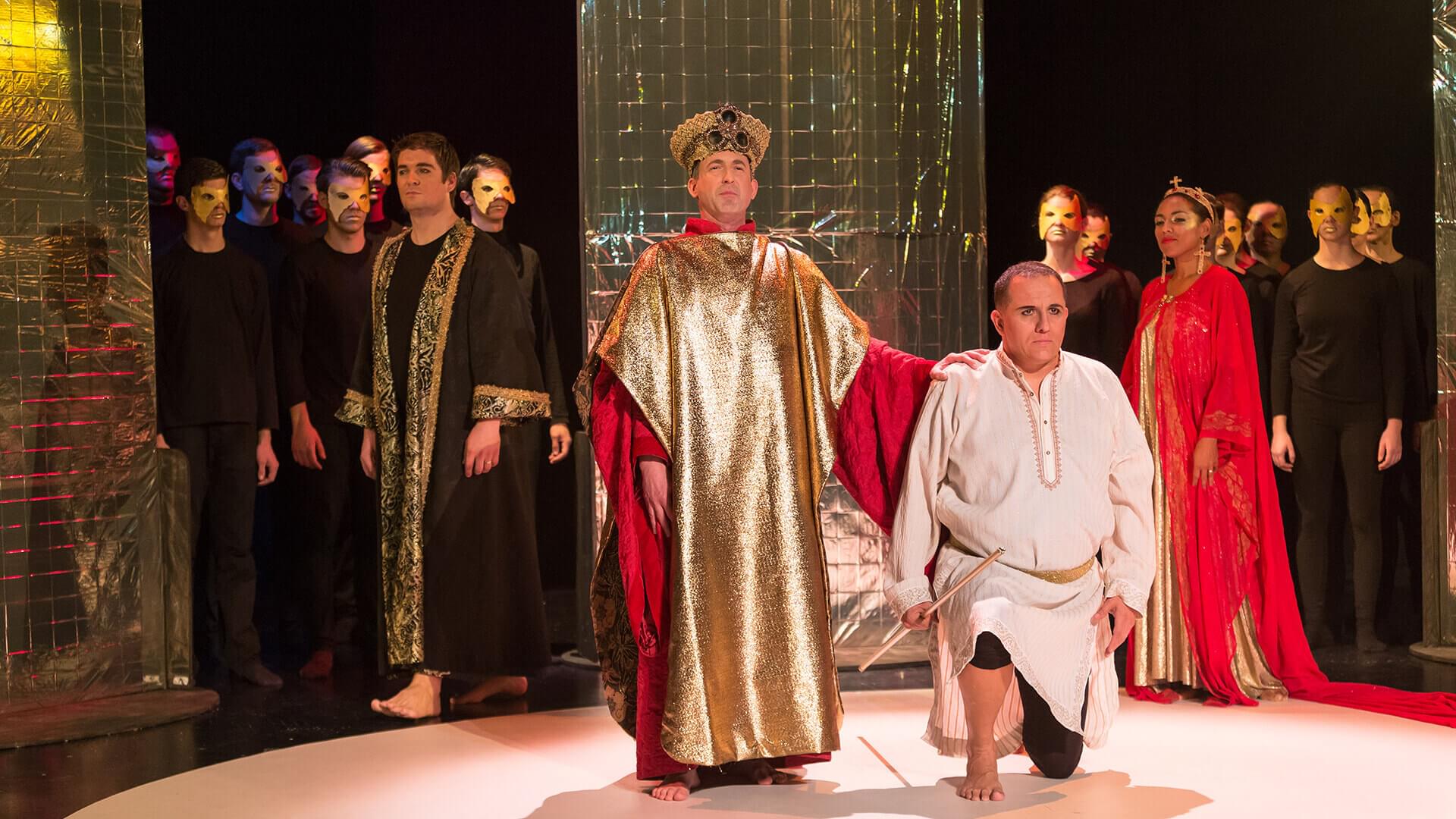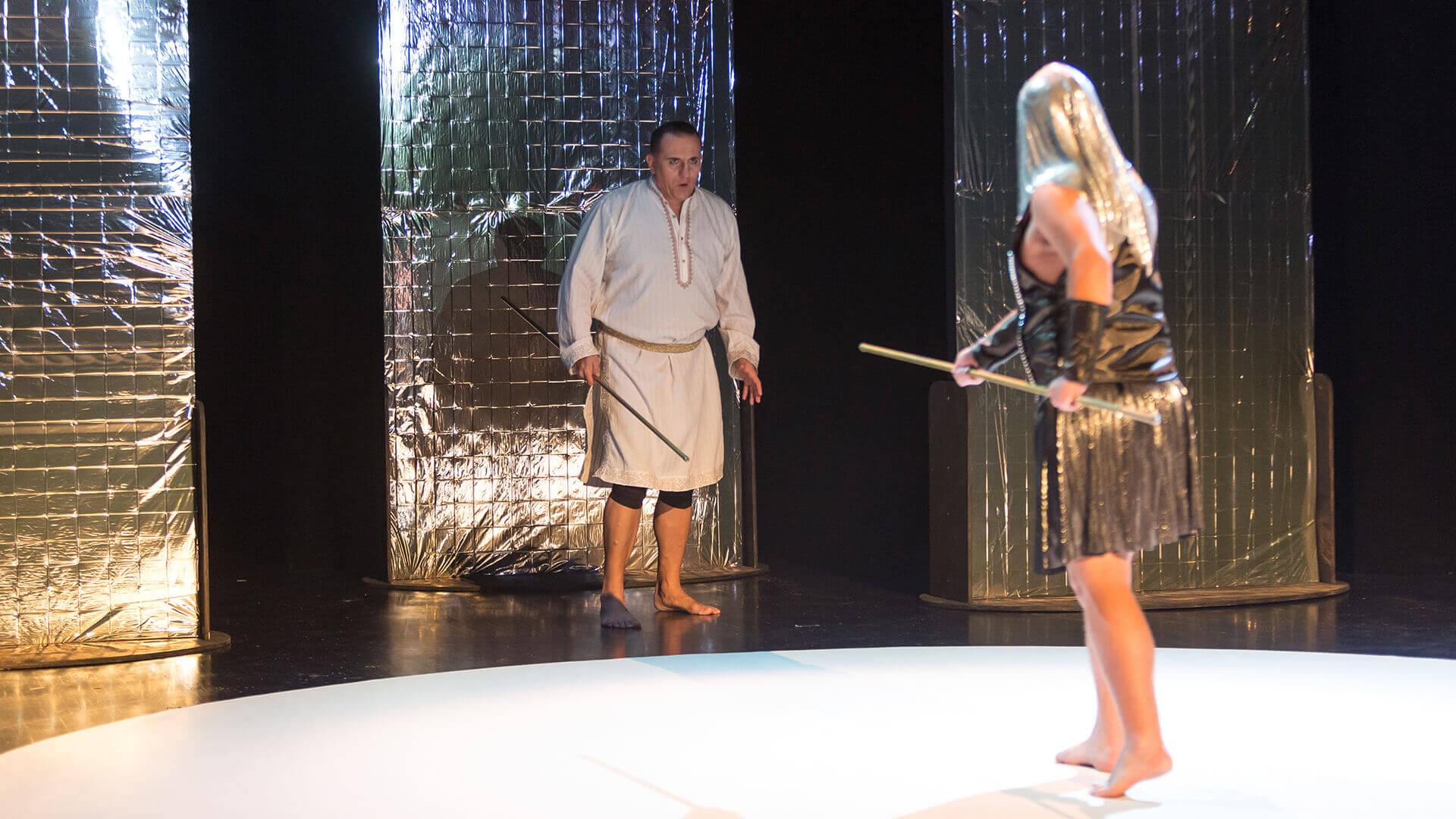Under the free sun
Music: Tom Kobe Libretto: Tom Kobe (adapted from the novel Under the Free Sun by Fran Saleški Finžgar)
Première: 22/11/2016, Janez Trdina Cultural Centre Novo mesto
Director: Eva Hribernik
Conductor: Aleš Makovac
Choirmaster: Andrej Resnik
Set and costume designer: Jaro Ješe
Lighting designer: Matej Burger
Producer: Bojan Bencik
Photographer: Darja Štravs Tisu
From the directing concept:
“A Story of the Ancient Grandfathers by Finžgar tells how the Slovenian people long for freedom and victory over the Byzantines. The common thread of the novel is the wars between nations and the struggle for power, which is relevantly reflected in today's global reality. The staging of the opera is conceived in aesthetically stylised frames that allow the ideas of this national and historical novel to be transferred to a universal and symbolic level, reaching the audience in a direct and immediate way. As in myths and fairy tales, our performance conveys a spiritual message about the cyclical nature of life and the constant struggle between good and evil through a poetic theatrical language full of symbols and archetypal imagery”
From the review:
“From the playbill, we learned about the professional approach of director Eva Hribernik and the value of connecting the story of Finžgar with a symbolic and archetypal level that touches the audience 'in a direct way' and connects the opera with the present time and the eternal struggle between good and evil: the extravagant wealth of the Byzantines and the humble agriculture of the early Slavic tribes, as well as the dichotomy of the historical vision of the Sclaveni, who were supposed to be oppressed slaves on the one hand and steadfast warriors on the other. The director's tactics were evident in the aesthetically sensible positioning of the protagonists on the stage and, above all, in the successful placement and movement of the mixed choir of the Jurij Slatkonja Vocal Academy. The simple and symbolic costume design, devoid of external glamour, belongs precisely to this group, whose performance came closest to a contemporary musical and theatrical expression. The choir, following the medieval idea of the 'commentator' within the operatic concept, dressed in plain black with elaborate masks, conveyed a more contemporary, universal expression – acting as an anonymous agent, as an expression of the spirit of community, the ancestors, or as part of the archetypal – proving that the power of musical and theatrical expression lies primarily in the conceptual design and almost independently of the so-called material elements.” (Maia Juvanc, SIGIC, 5 December 2016)


